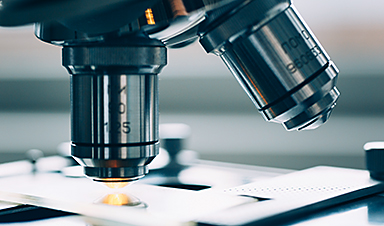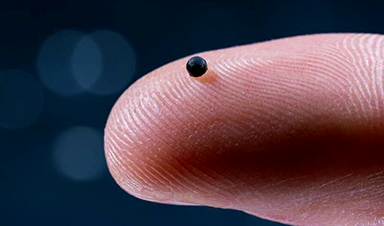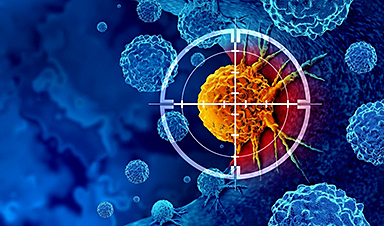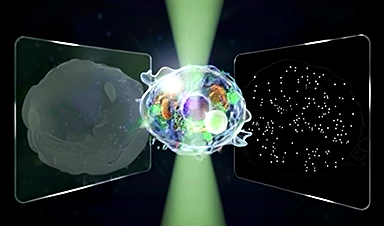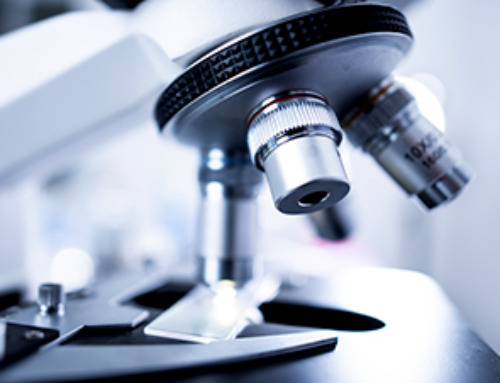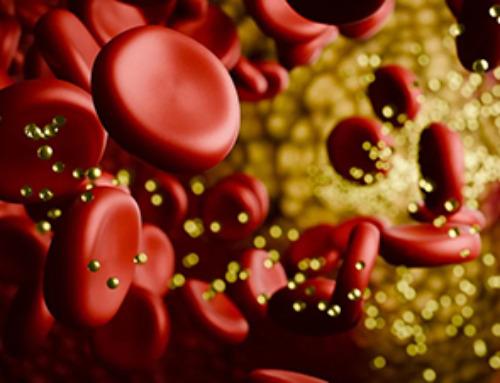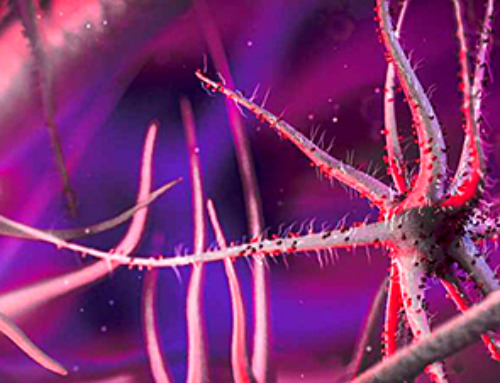In patients with serious and long-term COVID-19, disturbed blood coagulation has often been observed. Now, researchers at Linköping University (LiU), Sweden, have discovered that the body’s immune system can affect the spike protein on the surface of the SARS-CoV-2 virus, leading to the production of a misfolded spike protein called amyloid. The discovery of a possible connection between harmful amyloid production and symptoms of COVID-19 has been published in the Journal of American Chemical Society.
In those who have serious and long-term COVID-19, organs other than the lungs can be gravely affected. Complex symptoms and damage in, for example, the heart, kidneys, eyes, nose, and brain, as well as disturbed blood coagulation, can persist. Why the illness affects the body in this way is largely a mystery. Now, researchers at LiU have found a biological mechanism which has never been described before, and which can be a part of the explanation.
The research team studies illnesses which are caused by misfolded proteins, of which Alzheimer’s disease in the brain is the most well-known example. The researchers noted that there are many similarities between COVID-19-related symptoms and those which are observed in illnesses caused by misfolded proteins.
The functions of proteins are strongly affected by the fact that proteins are folded in specific ways that give rise to a specific three-dimensional structure. As well as this shape, a protein can also assume an alternative form. Over 30 different proteins are known to have this kind of alternative shape, which is associated with illness. This alternative folded protein is called amyloid. The LiU researchers wondered whether the virus which causes COVID-19, SARS-CoV-2, contains a protein that can create amyloid. They were specifically interested in the spike protein on the surface of the virus, which the virus uses to interact with the body’s cells and infect them.
Using computer simulation, the researchers discovered that the coronavirus’ spike protein contained seven different sequences which potentially could produce amyloid. Three of the seven sequences met the researchers’ criteria for being counted as amyloid-producing sequences when experimentally tested. They produced, among other things, so-called fibrils, which look like long threads when examined under an electron microscope.
But do these fibrils arise spontaneously? It is well known that many illnesses, such as Alzheimer’s, are preceded by a process where the body cuts up large proteins into smaller pieces, which can in turn produce the harmful amyloid. In their study, the researchers show that an enzyme from immune system’s white blood cells can cut up coronavirus’ spike protein. When the spike protein is cut up, it produces the exact piece of protein which, according to the researchers’ analysis, is most likely to produce amyloid. This enzyme is released in large quantities from one type of white blood cells, neutrophils, which are released early on during infections such as COVID-19. When the researchers mixed pure spike protein with this enzyme, called neutrophil elastase, unusual fibrils were produced.
“We have never seen such perfect, but scary, fibrils as these ones from the amyloid-producing SARS-CoV-2 spike protein and pieces thereof. The fibrils starting from the full-sized spike protein branched out like limbs on a body. Amyloids don’t usually branch out like that. We believe that it is due to the characteristics of the spike protein,” says Per Hammarström, professor at the Department of Physics, Chemistry and Biology (IFM) at Linköping University.
Previous research, including a study by South African researchers, has indicated that the spike protein may be involved in the production of small blood clots. The blood contains the fibrin protein, which helps the blood to coagulate when a vessel is damaged, so that the hole seals again and stops bleeding. When the injury has begun to heal, the coagulate is supposed to be broken up by plasmin, which is also found in blood. The researchers at LiU mixed amyloid-producing protein pieces from the spike protein together with these bodily substances in test tubes, and saw that the fibrin coagulate which was then produced could not be broken down in the usual way by plasmin. This newly discovered mechanism may lie behind the production of similar micro blood clots that have been observed in both serious and long-term COVID-19. Disturbed blood coagulation is also seen in many amyloid-related illnesses.
“We can see that the spike protein, when affected by our own immune system, can produce amyloid structures, and that this can potentially affect our blood coagulation. We believe that this discovery is significant for many fields of research, and we hope that other researchers will examine the questions that it raises,” says Sofie Nyström, who is an associate professor at IFM and the other author on the study.
News
New mRNA therapy targets drug-resistant pneumonia
Bacteria that multiply on surfaces are a major headache in health care when they gain a foothold on, for example, implants or in catheters. Researchers at Chalmers University of Technology in Sweden have found [...]
Current Heart Health Guidelines Are Failing To Catch a Deadly Genetic Killer
New research reveals that standard screening misses most people with a common inherited cholesterol disorder. A Mayo Clinic study reports that current genetic screening guidelines overlook most people who have familial hypercholesterolemia, an inherited disorder that [...]
Scientists Identify the Evolutionary “Purpose” of Consciousness
Summary: Researchers at Ruhr University Bochum explore why consciousness evolved and why different species developed it in distinct ways. By comparing humans with birds, they show that complex awareness may arise through different neural architectures yet [...]
Novel mRNA therapy curbs antibiotic-resistant infections in preclinical lung models
Researchers at the Icahn School of Medicine at Mount Sinai and collaborators have reported early success with a novel mRNA-based therapy designed to combat antibiotic-resistant bacteria. The findings, published in Nature Biotechnology, show that in [...]
New skin-permeable polymer delivers insulin without needles
A breakthrough zwitterionic polymer slips through the skin’s toughest barriers, carrying insulin deep into tissue and normalizing blood sugar, offering patients a painless alternative to daily injections. A recent study published in the journal Nature examines [...]
Multifunctional Nanogels: A Breakthrough in Antibacterial Strategies
Antibiotic resistance is a growing concern - from human health to crop survival. A new study successfully uses nanogels to target and almost entirely inhibit the bacteria P. Aeruginosa. Recently published in Angewandte Chemie, the study [...]
Nanoflowers rejuvenate old and damaged human cells by replacing their mitochondria
Biomedical researchers at Texas A&M University may have discovered a way to stop or even reverse the decline of cellular energy production—a finding that could have revolutionary effects across medicine. Dr. Akhilesh K. Gaharwar [...]
The Stunning New Push to Protect the Invisible 99% of Life
Scientists worldwide have joined forces to build the first-ever roadmap for conserving Earth’s vast invisible majority—microbes. Their new IUCN Specialist Group reframes conservation by elevating microbial life to the same urgency as plants and [...]
Scientists Find a Way to Help the Brain Clear Alzheimer’s Plaques Naturally
Scientists have discovered that the brain may have a built-in way to fight Alzheimer’s. By activating a protein called Sox9, researchers were able to switch on star-shaped brain cells known as astrocytes and turn them into [...]
Vision can be rebooted in adults with amblyopia, study suggests
Temporarily anesthetizing the retina briefly reverts the activity of the visual system to that observed in early development and enables growth of responses to the amblyopic eye, new research shows. In the common vision [...]
Ultrasound-activated Nanoparticles Kill Liver Cancer and Activate Immune System
A new ultrasound-guided nanotherapy wipes out liver tumors while training the immune system to keep them from coming back. The study, published in Nano Today, introduces a biodegradable nanoparticle system that combines sonodynamic therapy and cell [...]
Magnetic nanoparticles that successfully navigate complex blood vessels may be ready for clinical trials
Every year, 12 million people worldwide suffer a stroke; many die or are permanently impaired. Currently, drugs are administered to dissolve the thrombus that blocks the blood vessel. These drugs spread throughout the entire [...]
Reviving Exhausted T Cells Sparks Powerful Cancer Tumor Elimination
Scientists have discovered how tumors secretly drain the energy from T cells—the immune system’s main cancer fighters—and how blocking that process can bring them back to life. The team found that cancer cells use [...]
Very low LDL-cholesterol correlates to fewer heart problems after stroke
Brigham and Women's Hospital's TIMI Study Group reports that in patients with prior ischemic stroke, very low achieved LDL-cholesterol correlated with fewer major adverse cardiovascular events and fewer recurrent strokes, without an apparent increase [...]
“Great Unified Microscope” Reveals Hidden Micro and Nano Worlds Inside Living Cells
University of Tokyo researchers have created a powerful new microscope that captures both forward- and back-scattered light at once, letting scientists see everything from large cell structures to tiny nanoscale particles in a single shot. Researchers [...]
Breakthrough Alzheimer’s Drug Has a Hidden Problem
Researchers in Japan found that although the Alzheimer’s drug lecanemab successfully removes amyloid plaques from the brain, it does not restore the brain’s waste-clearing system within the first few months of treatment. The study suggests that [...]
